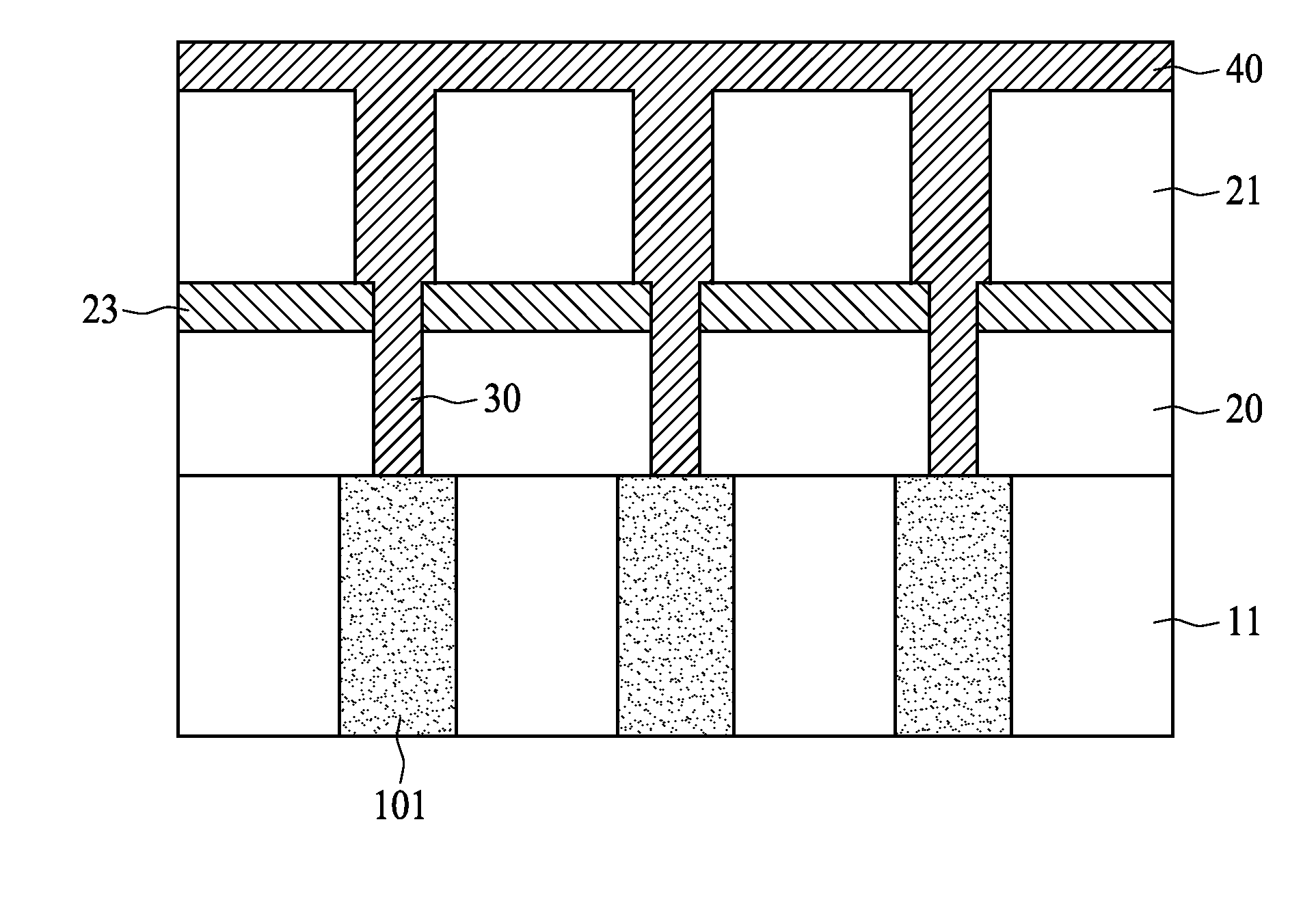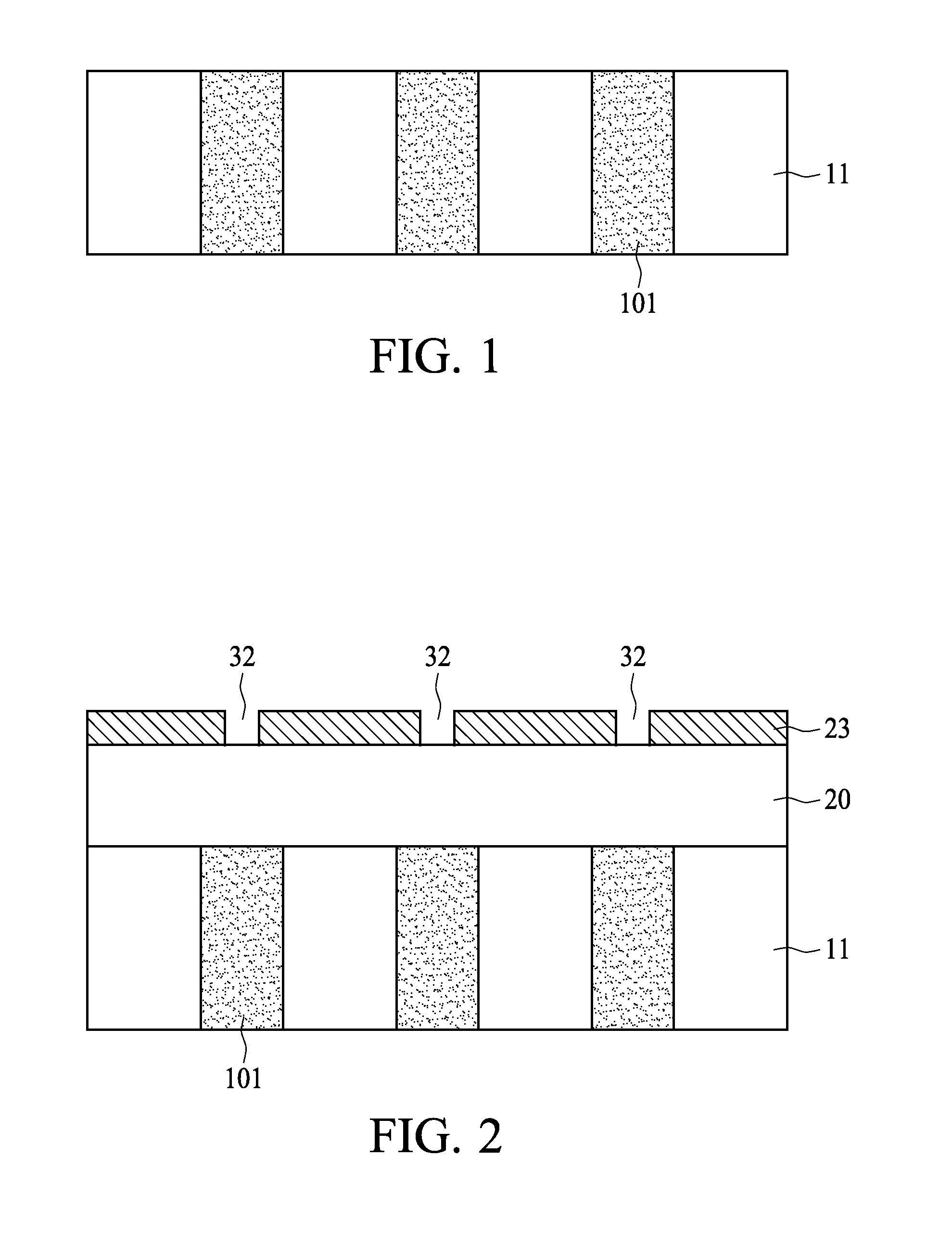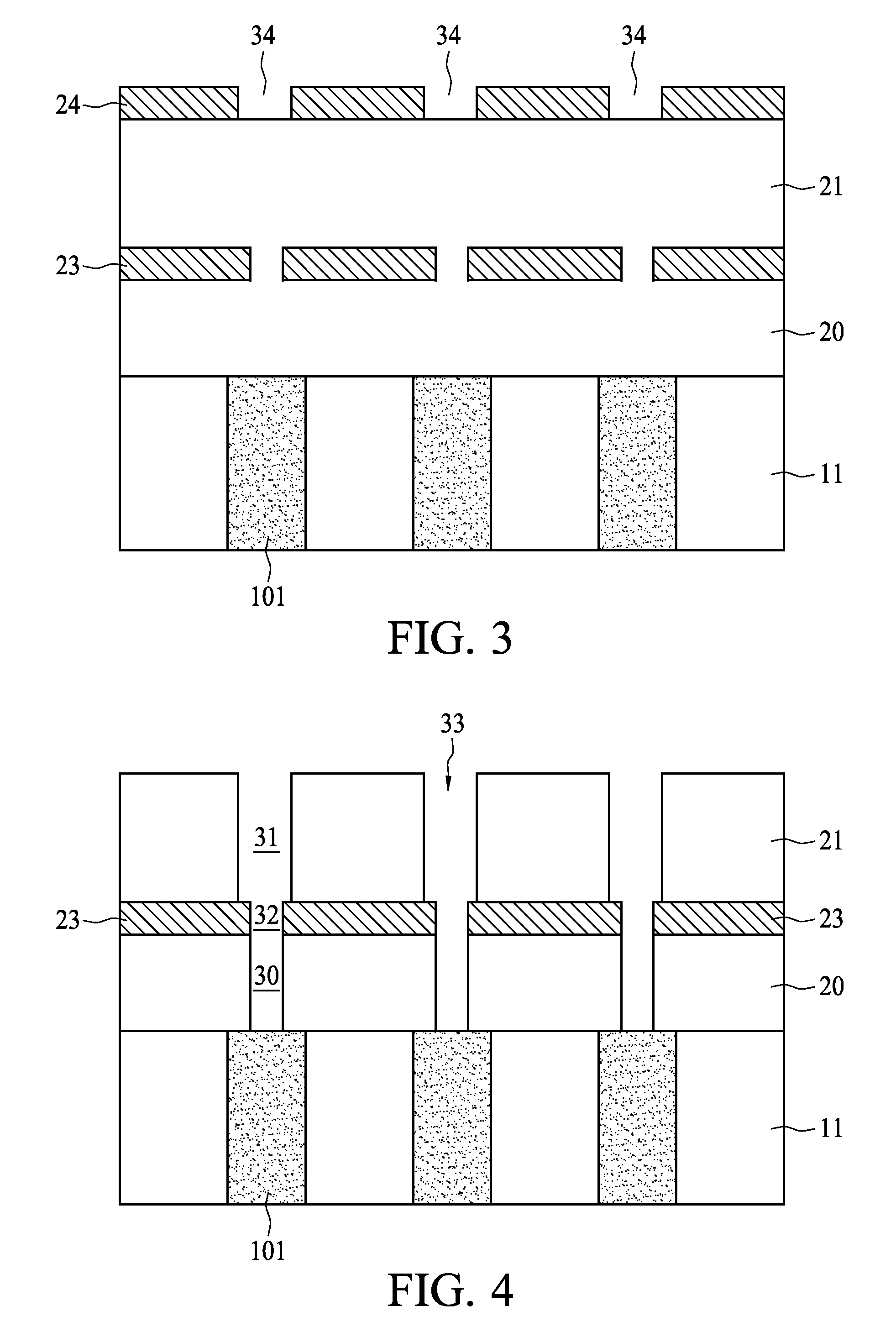Method of forming an interconnect structure with high process margins
a technology of interconnect structure and process margin, which is applied in the direction of semiconductor devices, electrical equipment, semiconductor/solid-state device details, etc., can solve the problems of increasing the risk of short-circuiting, increasing the difficulty of deep tungsten contact formation, and increasing the difficulty of alignment of via parts and line parts, so as to reduce the aspect ratio of copper metallization, improve the reliability of tungsten, and reduce the effect of device performan
- Summary
- Abstract
- Description
- Claims
- Application Information
AI Technical Summary
Benefits of technology
Problems solved by technology
Method used
Image
Examples
Embodiment Construction
[0019]The following description of the disclosure accompanies drawings, which are incorporated in and constitute a part of this specification, and illustrate embodiments of the disclosure, but the disclosure is not limited to the embodiments. In addition, the following embodiments can be properly integrated to complete another embodiment.
[0020]The present disclosure is directed to a method of forming reliable contacts with a high process margin. In order to make the present disclosure completely comprehensible, detailed steps and structures are provided in the following description.
[0021]FIG. 1 is a substrate 11 with a plurality of contacts 101. Under the plurality of contacts 101, there may be a plurality of devices or MOSFETs electrically connected with the plurality of contacts 101. The plurality of contacts 101 are filled with metal, for example, tungsten. The tungsten contact holes are formed by front-end-of-line processing, and upper parts of the substrate 11 are further plana...
PUM
 Login to View More
Login to View More Abstract
Description
Claims
Application Information
 Login to View More
Login to View More - R&D
- Intellectual Property
- Life Sciences
- Materials
- Tech Scout
- Unparalleled Data Quality
- Higher Quality Content
- 60% Fewer Hallucinations
Browse by: Latest US Patents, China's latest patents, Technical Efficacy Thesaurus, Application Domain, Technology Topic, Popular Technical Reports.
© 2025 PatSnap. All rights reserved.Legal|Privacy policy|Modern Slavery Act Transparency Statement|Sitemap|About US| Contact US: help@patsnap.com



